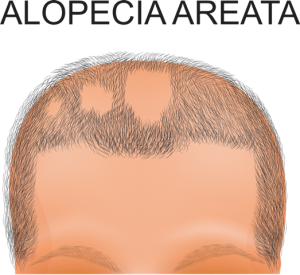How To Treat Alopecia Areata
The Steps You Can Take To Treat Alopecia Areata
Alopecia areata is an autoimmune skin disease that affects both men and women of all ages and causes their hair to fall out. The amount of hair that falls out varies; some people experience hair loss in a small area or “bald spots” and other people may experience diffuse thinning throughout the scalp and become completely bald.

Because the Alopecia areata may occur for a short time or last for a person’s entire life, it is important to get an accurate diagnosis which starts with having a scalp biopsy performed by a dermatologist. Treatment options for Alopecia areata patients varies based on each person and their individual medical history. The first course of action Ziering physicians take is creating a custom plan of non-surgical therapies to promote hair regrowth and health and to slow down hair loss.
Ways To Treat Alopecia Areata
Topical medications: Topical medications like corticosteroids or minoxidil can be applied directly to the scalp to help stimulate hair growth and reduce inflammation.
Injection therapy: Injections of corticosteroids or other medications can be given directly into the affected areas of the scalp to help stimulate hair growth.
Oral medications: Oral medications like corticosteroids, immunosuppressants, or biologics can be taken to help reduce inflammation and suppress the immune system.
Light therapy: Phototherapy, also known as light therapy, involves exposing the affected areas of the scalp to specific wavelengths of light to help stimulate hair growth.
A common Treatment plan may include daily application of Minoxidil or Z82 daily to affected areas, laser therapy every other day, along with topical steroids, or injections of dilute triamcinolone. Alopecia areata patients are seen monthly for evaluation and injections for at least one year. If no improvement is noted after a year, then the patient is referred to dermatologist for further evaluation and a possible course of oral therapies.
Hair Transplant surgery is not considered or recommended for Alopecia areata patients unless the Alopecia areata area is “burned out” and there is no change or recurrence in the affected area(s) for a full year after completing the one year of non-surgical treatments. Effectively, an Alopecia areata patient would have to wait 2 years before being revaluated for hair transplant surgery. However, if the patient has multiple bald patches in the donor area they will likely not be treated surgically as multiple areas may recur. Also, if the patient is younger, the likelihood of recurrence is high, and surgical hair restoration rarely if ever recommended.
Who Can Treat Alopecia Areata
“If the Alopecia area is still present, shares Ziering Chicago Hair Transplant Surgeon, Dr. Kinler, many patients do opt to wear wigs, hairpieces or camouflage their hair loss with hair fiber products like Sure Thik and Toppik, or even Scalp Micropigmentation. We frequently refer those patients to our preferred providers who have the experience and expertise in working with our hair loss patients.”
If you think you may have Alopecia areata, don’t despair. We will work with you and your dermatologist to find the best treatment solution.
Contact your closet hair transplant centers for a personal consultation.
